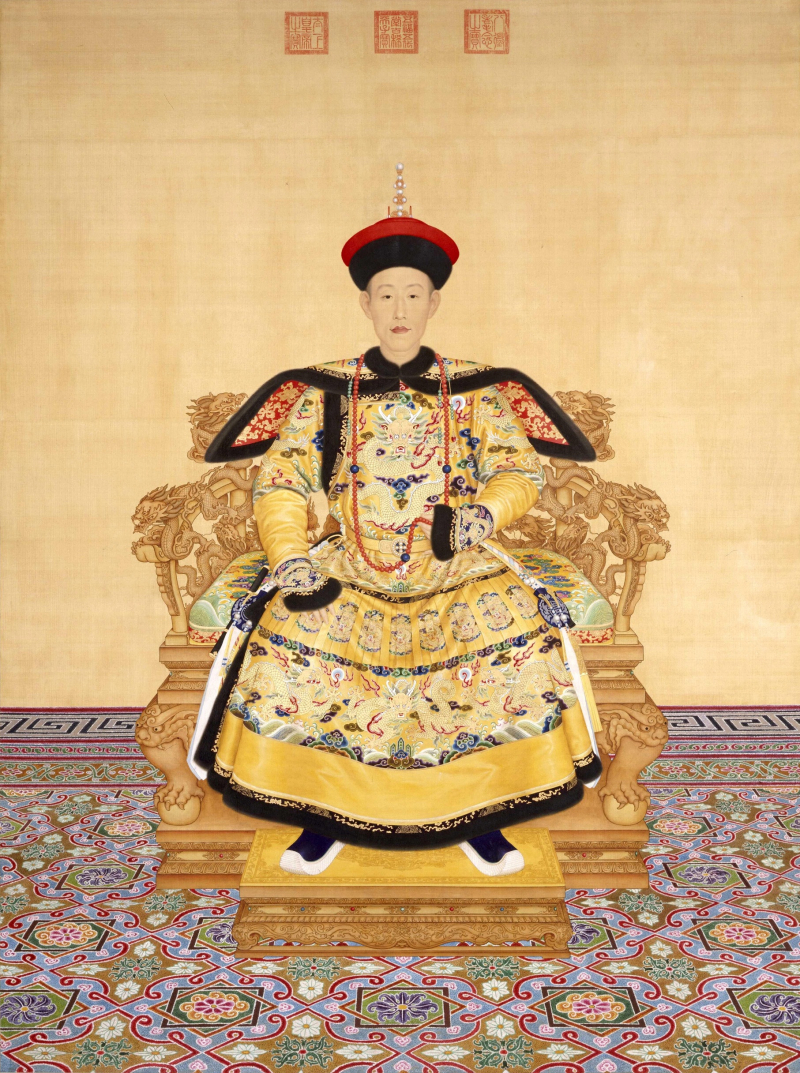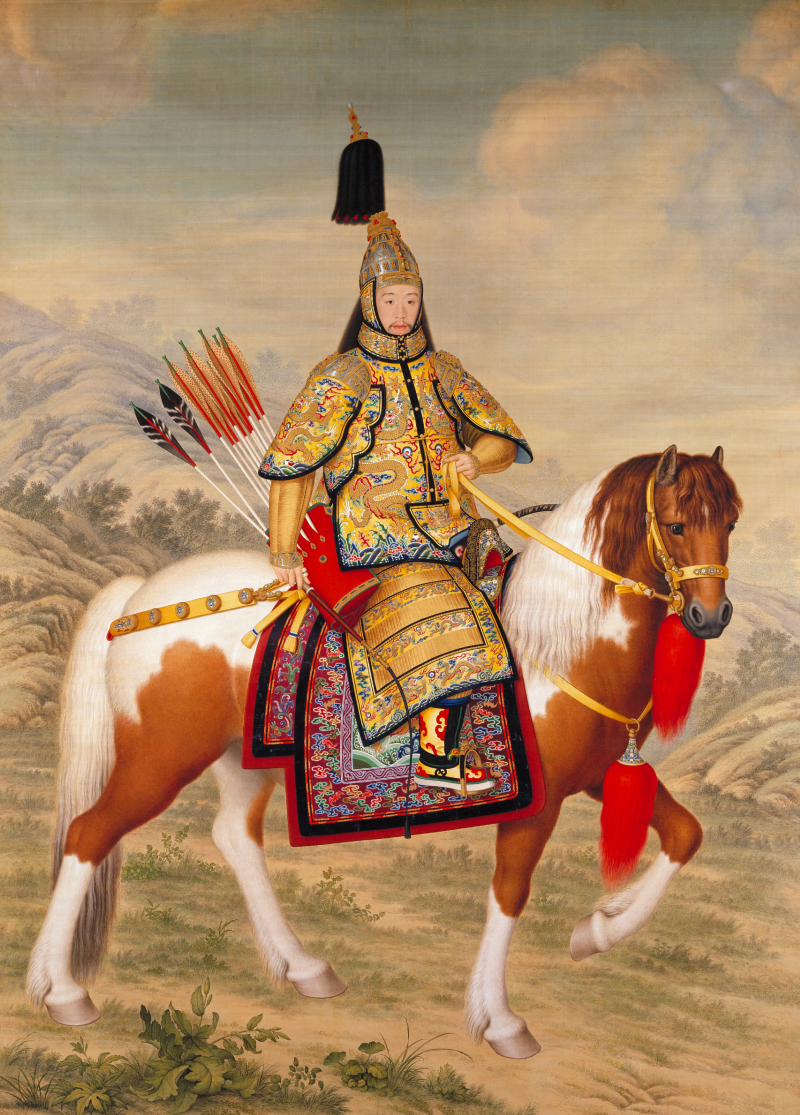Qianlong Emperor
The Qianlong Emperor (25 September 1711 - 7 February 1799) reigned from 1735 to 1796 as the fifth Emperor of the Qing dynasty and the fourth Qing emperor to rule over China proper. In 1796, he abdicated in favor of his son, the Jiaqing Emperor, out of filial piety to his grandfather, the Kangxi Emperor, who had reigned for 61 years, so that Kangxi Emperor would retain the title of longest-reigning emperor. Despite his retirement, the Qianlong Emperor retained ultimate power as the Retired Emperor until his death in 1799, making him one of the longest-reigning monarchs in history, as well as one of the longest-lived, dying at the age of 87.
During his long reign as a capable and cultured ruler inheriting a thriving empire, the Qing Empire reached its most splendid and prosperous era, boasting a large population and economy. As a military leader, he led military campaigns to the greatest extent possible, conquering and sometimes destroying Central Asian kingdoms. This changed in his later years, when the Qing empire began to decline due to corruption and wastefulness in his court, as well as a stagnant civil society.
In 1796, at the age of 85, the Qianlong Emperor handed over the throne to his son, the 36-year-old Jiaqing Emperor, after nearly 61 years on the throne. For the next three years, he held the title Taishang Huang (or Emperor Emeritus), despite the fact that he retained power and the Jiaqing Emperor ruled only in name. He died in 1799 without ever moving into his retirement suites in the Qianlong Garden.












